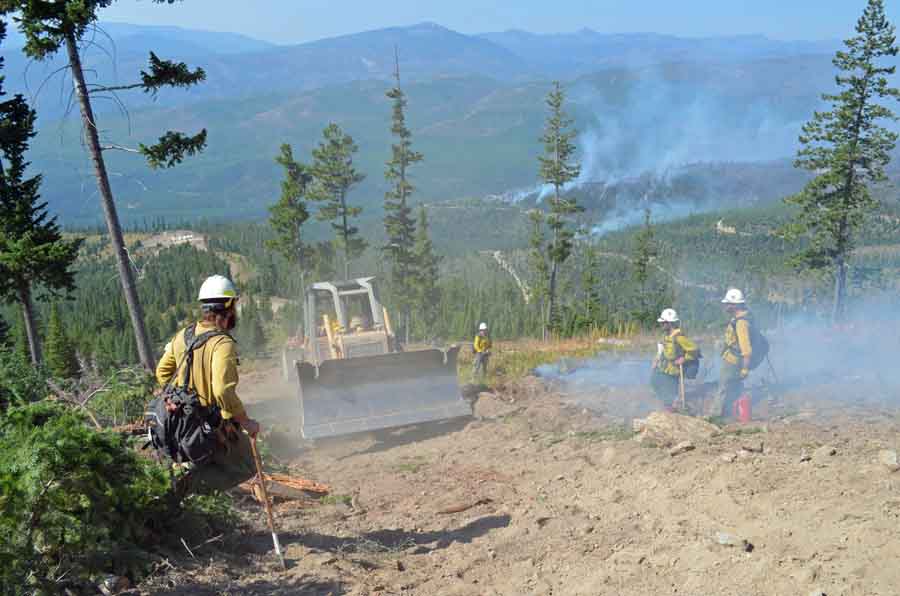An engine crew’s egress from their assignment while working on a spot fire on the Chetco Bar Fire in Southwest Oregon was cut off by the advancing edge of the main fire August 18, 2017 on the Rogue River-Siskiyou National Forest.
Below is the narrative from the 72-hour report issued August 26, 2017, which has preliminary information subject to change.
****
“On Friday, August 18, 2017, at approximately 12:30 pm, the Chetco Bar Fire cut off a Type 3 Wildland Fire Engine from the rest of their task force and from safe egress. Three firefighters in the engine drove through the fire to reach a safe location and spent the night within the active fire perimeter. They reunited with rest of their crew members early the following morning. There were no injuries or vehicle damage, but this incident had potential for very serious outcomes.
The engine was supporting a burnout operation on the south side of National Forest System Road 1917 to protect Packer’s Cabin, a historic building on the Rogue River-Siskiyou National Forest managed as a recreational rental cabin. The engine became separated from the rest of the task force when it engaged a spot fire on the north side of the road, supported by a Type 1 helicopter.
Preliminary indications are that the main fire pushed up from the drainage to the south and crossed Road 1917 west of the engine, cutting it off from egress and from the rest of the task force. After consulting with the helicopter and the Task Force Leader, the engine turned around and headed back east along Road 1917 to a wide spot mostly cleared of fuel by intense fire the previous night and that morning. They spent the rest of the day there before making their way back west to the cabin in the evening, where they spent the rest of the night. Night Shift was able to reach them early Saturday morning and lead them back out of the fire.
A Facilitated Learning Analysis (FLA) Team has been assigned, and is working with participants to identify lessons learned from this incident. The intent of the FLA is to share the story of the incident with others in the wildland fire community so that future responders can anticipate similar events and avoid injury or entrapment.”





